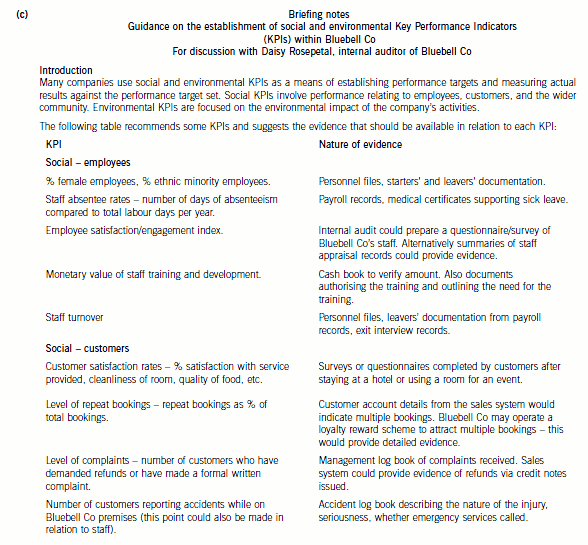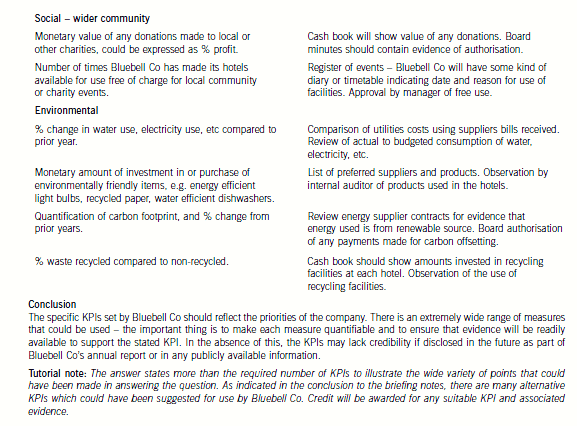2021年山西ACCA考试准考证打印时间:考前两周
发布时间:2020-12-24
2020年ACCA考试已经结束,参考2020年ACCA准考证打印时间,来看看2021年山西省ACCA考试的准考证打印时间吧!
ACCA考试准考证打印时间:在考前两周,可以登陆MYACCA里打印准考证(准考证是学员考试必带的证明,请重视,打印准考证数量须和考试科数相同)。因邮寄的准考证收到时间较晚,建议提前打印好准考证,仔细核对报考科目和考试地点有无错误。
ACCA考试准考证打印步骤如下:
(1)ACCA考试学员需登录www.accaglobal.com。
(2)点击MYACCA后输入学员号和密码进入。
(3)点击左侧栏里EXAM ENTRY&RESULTS进入。
(4)点击EXAM ATTENDANCE DOCKET生成页面打印即可。
ACCA准考证打印注意事项与常见问题:
1、准考证打印需要关注问题
首先提醒考生们在打印准考证时要认真核对个人信息,是否和报名时所用的身份证信息一致,如果出现问题一定要第一时间联系协会。
大家在打印时除了要留意准考证上的姓名、考试地点和照片等信息外,也要看一下各科目的考试时间。
2、打印网址进不去
准考证打印的前几天属于高峰期,大家要尽量的错开高峰期打印,但是也不要拖到最后,避免发生网络错误打印不出准考证的情况出现。
3、准考证不幸丢失怎么办?
建议大家在打印时留好备份,避免丢失造成不必要的麻烦。
4、如果无法下载该怎么办呢?
很可能是由于学员所报考考点的地址信息细节暂时未能确认而导致准考证未开放下载。请耐心等待ACCA确认地址信息细节。如果有考生是属于此情况,ACCA将发送电子邮件告知何时可以下载准考证,请考生注意查收相关邮件!
5、如果考场地点尚未确定,页面会显示?
将看到以下提示信息: “Please note your exam docket is currently unavailable, please try again later.” (请留意,目前您的准考证还未能下载,请稍后再试。)
6、准考证上信息和报考系统不一样
准考证作为正式的考试凭证,为学员确认每个考季的最终考试信息,因此,应以准考证上的考试信息为准,包括考试日期、时间与考点地址。
以上内容就是关于山西省ACCA考试准考证打印的相关信息,准备参加2021年考试的考生,做好备考计划,多复习巩固,争取在2021年的考试中取得属于自己胜利的果实!
下面小编为大家准备了 ACCA考试 的相关考题,供大家学习参考。
(b) While the refrigeration units were undergoing modernisation Lamont outsourced all its cold storage requirements
to Hogg Warehousing Services. At 31 March 2007 it was not possible to physically inspect Lamont’s inventory
held by Hogg due to health and safety requirements preventing unauthorised access to cold storage areas.
Lamont’s management has provided written representation that inventory held at 31 March 2007 was
$10·1 million (2006 – $6·7 million). This amount has been agreed to a costing of Hogg’s monthly return of
quantities held at 31 March 2007. (7 marks)
Required:
For each of the above issues:
(i) comment on the matters that you should consider; and
(ii) state the audit evidence that you should expect to find,
in undertaking your review of the audit working papers and financial statements of Lamont Co for the year ended
31 March 2007.
NOTE: The mark allocation is shown against each of the three issues.
(b) Outsourced cold storage
(i) Matters
■ Inventory at 31 March 2007 represents 21% of total assets (10·1/48·0) and is therefore a very material item in the
balance sheet.
■ The value of inventory has increased by 50% though revenue has increased by only 7·5%. Inventory may be
overvalued if no allowance has been made for slow-moving/perished items in accordance with IAS 2 Inventories.
■ Inventory turnover has fallen to 6·6 times per annum (2006 – 9·3 times). This may indicate a build up of
unsaleable items.
Tutorial note: In the absence of cost of sales information, this is calculated on revenue. It may also be expressed
as the number of days sales in inventory, having increased from 39 to 55 days.
■ Inability to inspect inventory may amount to a limitation in scope if the auditor cannot obtain sufficient audit
evidence regarding quantity and its condition. This would result in an ‘except for’ opinion.
■ Although Hogg’s monthly return provides third party documentary evidence concerning the quantity of inventory it
does not provide sufficient evidence with regard to its valuation. Inventory will need to be written down if, for
example, it was contaminated by the leakage (before being moved to Hogg’s cold storage) or defrosted during
transfer.
■ Lamont’s written representation does not provide sufficient evidence regarding the valuation of inventory as
presumably Lamont’s management did not have access to physically inspect it either. If this is the case this may
call into question the value of any other representations made by management.
■ Whether, since the balance sheet date, inventory has been moved back from Hogg’s cold storage to Lamont’s
refrigeration units. If so, a physical inspection and roll-back of the most significant fish lines should have been
undertaken.
Tutorial note: Credit will be awarded for other relevant accounting issues. For example a candidate may question
whether, for example, cold storage costs have been capitalised into the cost of inventory. Or whether inventory moves
on a FIFO basis in deep storage (rather than LIFO).
(ii) Audit evidence
■ A copy of the health and safety regulation preventing the auditor from gaining access to Hogg’s cold storage to
inspect Lamont’s inventory.
■ Analysis of Hogg’s monthly returns and agreement of significant movements to purchase/sales invoices.
■ Analytical procedures such as month-on-month comparison of gross profit percentage and inventory turnover to
identify any trend that may account for the increase in inventory valuation (e.g. if Lamont has purchased
replacement inventory but spoiled items have not been written off).
■ Physical inspection of any inventory in Lamont’s refrigeration units after the balance sheet date to confirm its
condition.
■ An aged-inventory analysis and recalculation of any allowance for slow-moving items.
■ A review of after-date sales invoices for large quantities of fish to confirm that fair value (less costs to sell) exceed
carrying amount.
■ A review of after-date credit notes for any returns of contaminated/perished or otherwise substandard fish.
(c) In April 2006, Keffler was banned by the local government from emptying waste water into a river because the
water did not meet minimum standards of cleanliness. Keffler has made a provision of $0·9 million for the
technological upgrading of its water purifying process and included $45,000 for the penalties imposed in ‘other
provisions’. (5 marks)
Required:
For each of the above issues:
(i) comment on the matters that you should consider; and
(ii) state the audit evidence that you should expect to find,
in undertaking your review of the audit working papers and financial statements of Keffler Co for the year ended
31 March 2006.
NOTE: The mark allocation is shown against each of the three issues.
(c) Ban on emptying waste water
(i) Matter
■ $0·9m provision for upgrading the process represents 45% PBT and is very material. This provision is also
material to the balance sheet (2·7% of total assets).
■ The provision for penalties is immaterial (2·2% PBT and 0·1% total assets).
■ The ban is an adjusting post balance sheet event in respect of the penalties (IAS 10). It provides evidence that at
the balance sheet date Keffler was in contravention of local government standards. Therefore it is correct (in
accordance with IAS 37) that a provision has been made for the penalties. As the matter is not material inclusion
in ‘other provisions’ is appropriate.
■ However, even if Keffler has a legal obligation to meet minimum standards, there is no obligation for upgrading the
purifying process at 31 March 2006 and the $0·9m provision should be written back.
■ If the provision for upgrading is not written back the audit opinion should be qualified ‘except for’ (disagreement).
■ Keffler does not even have a contingent liability for upgrading the process because there is no present obligation to
do so. The obligation is to stop emptying unclean water into the river. Nor is there a possible obligation whose
existence will be confirmed by an uncertain future event not wholly within Keffler’s control.
Tutorial note: Consider that Keffler has alternatives wholly within its control. For example, it could ignore the ban
and incur fines, or relocate/close this particular plant/operation or perhaps dispose of the water by alternative
means.
■ The need for a technological upgrade may be an indicator of impairment. Management should have carried out
an impairment test on the carrying value of the water purifying process and recognised any impairment loss in the
profit for the year to 31 March 2006.
■ Management’s intention to upgrade the process is more appropriate to an environmental responsibility report (if
any).
■ Whether there is any other information in documents containing financial statements.
(ii) Audit evidence
■ Penalty notices of fines received to confirm amounts and period/dates covered.
■ After-date payment of fines agreed to the cash book.
■ A copy of the ban and any supporting report on the local government’s findings.
■ Minutes of board meetings at which the ban was discussed confirming management’s intentions (e.g. to upgrade
the process).
Tutorial note: This may be disclosed in the directors’ report and/or as a non-adjusting post balance sheet event.
■ Any tenders received/costings for upgrading.
Tutorial note: This will be relevant if, for example, capital commitment authorised (by the board) but not
contracted for at the year end are disclosed in the notes to the financial statements.
■ Physical inspection of the emptying point at the river to confirm that Keffler is not still emptying waste water into
it (unless the upgrading has taken place).
Tutorial note: Thereby incurring further penalties.
A new internal auditor, Daisy Rosepetal, has recently joined Bluebell Co. She has been asked by management to
establish and to monitor a variety of social and environmental Key Performance Indicators (KPIs). Daisy has no
experience in this area, and has asked you for some advice. It has been agreed with Bluebell Co’s audit committee
that you are to provide guidance to Daisy to help her in this part of her role, and that this does not impair the
objectivity of the audit.
(c) Recommend EIGHT KPIs which could be used to monitor Bluebell Co’s social and environmental
performance, and outline the nature of evidence that should be available to provide assurance on the
accuracy of the KPIs recommended. Your answer should be in the form. of briefing notes to be used at a
meeting with Daisy Rosepetal. (10 marks)
Note: requirement (c) includes 2 professional marks.


(b) Discuss the nature of the following issues in developing IFRSs for SMEs.
(i) The purpose of the standards and the type of entity to whom they should apply. (7 marks)
(b) There are several issues which need to be addressed when developing IFRSs for SMEs:
(i) The purpose of the standards and type of entity
The principal aim of the development of an accounting framework for SMEs is to provide a framework which generates
relevant, reliable and useful information. The standards should provide high quality and understandable accounting
standards suitable for SMEs globally. Additionally they should meet the needs set out in (a) above. For example reduce
the financial reporting burden for SMEs. It is unlikely that one of the objectives would be to provide information for
management or meet the needs of the tax authorities as these bodies will have specific requirements which would be
difficult to meet in an accounting standard. However, it is likely that the standards for SMEs will be a modified version
of the full IFRSs and not an independently developed set of standards in order that they are based on the same
conceptual framework and will allow easier transition to full IFRS if the SME grows or decides to become a publicly listed
entity.
It is important to define the type of entity for which the standards are intended. Companies who have issued shares to
the public would be expected to use full IFRS. The question arises as to whether SME standards should apply to all
unlisted entities or just those listed entities below a certain size threshold. The difficulty with size criteria is that it would
have to apply worldwide and it would be very difficult to specify such criteria. Additionally some unlisted companies, for
example public utilities, have a reporting obligation that is equivalent to that of a listed company and should follow full
IFRS.
The main characteristic which distinguishes SMEs from other entities is the degree of public accountability. Thus the
definition of what constitutes an SME could revolve around those entities that do not have public accountability.
Indicators of public accountability will have to be developed. For example, a listed company or companies holding assets
in a fiduciary capacity (bank), or a public utility, or an entity with economic significance in its country. Thus all entities
that do not have public accountability may be considered as potential users of IFRSs for SMEs.
Size may not be the best way to determine what is an SME. SMEs could be defined by reference to ownership and themanagement of the entity. SMEs are not necessarily just smaller versions of public companies.
声明:本文内容由互联网用户自发贡献自行上传,本网站不拥有所有权,未作人工编辑处理,也不承担相关法律责任。如果您发现有涉嫌版权的内容,欢迎发送邮件至:contact@51tk.com 进行举报,并提供相关证据,工作人员会在5个工作日内联系你,一经查实,本站将立刻删除涉嫌侵权内容。
- 2020-01-08
- 2020-01-08
- 2020-08-14
- 2020-01-10
- 2021-01-01
- 2020-01-09
- 2020-01-09
- 2020-01-09
- 2020-01-09
- 2020-01-10
- 2020-08-14
- 2020-01-10
- 2020-08-15
- 2020-01-10
- 2020-01-10
- 2020-09-04
- 2020-01-08
- 2020-12-24
- 2020-01-09
- 2020-01-10
- 2020-09-04
- 2020-01-10
- 2021-06-27
- 2020-12-24
- 2020-08-15
- 2021-04-09
- 2020-01-10
- 2020-08-14
- 2020-01-10
- 2020-01-08